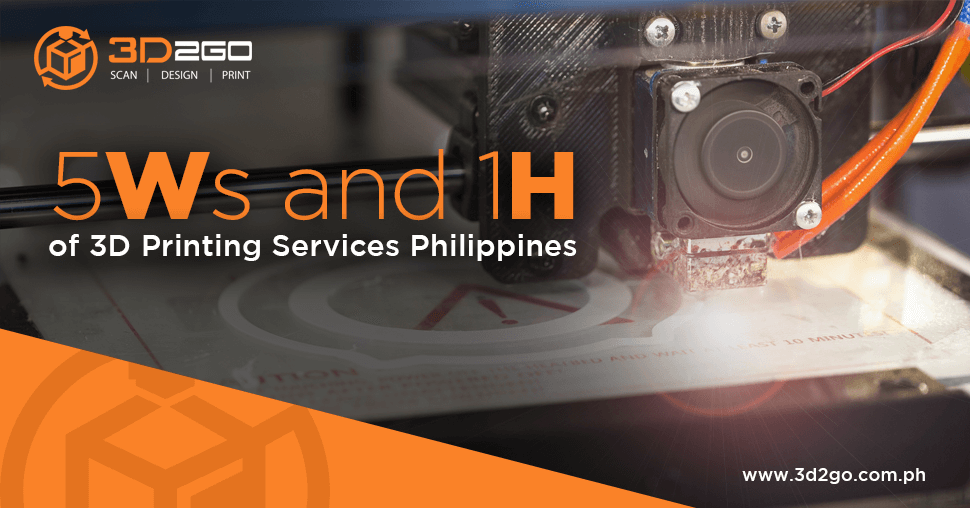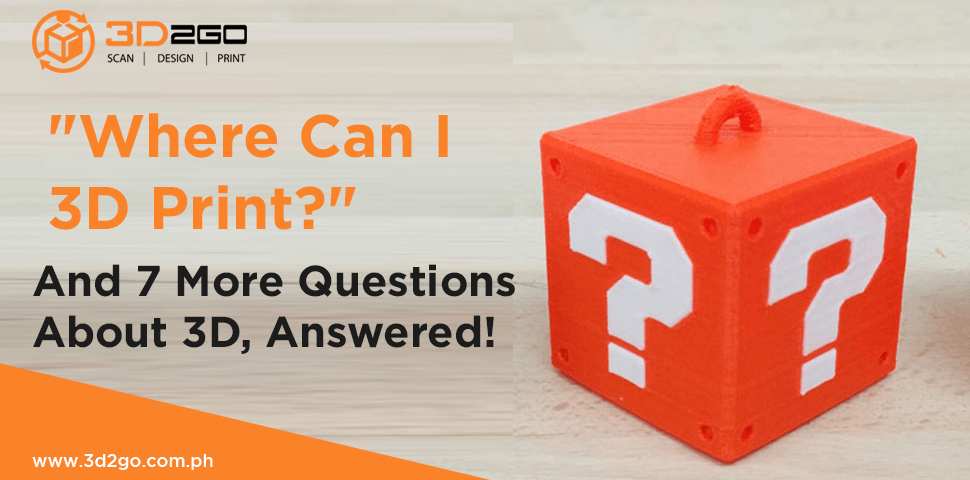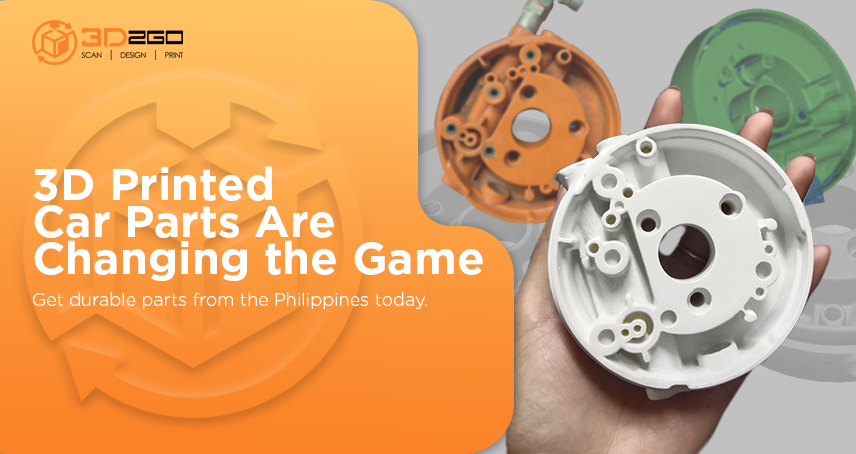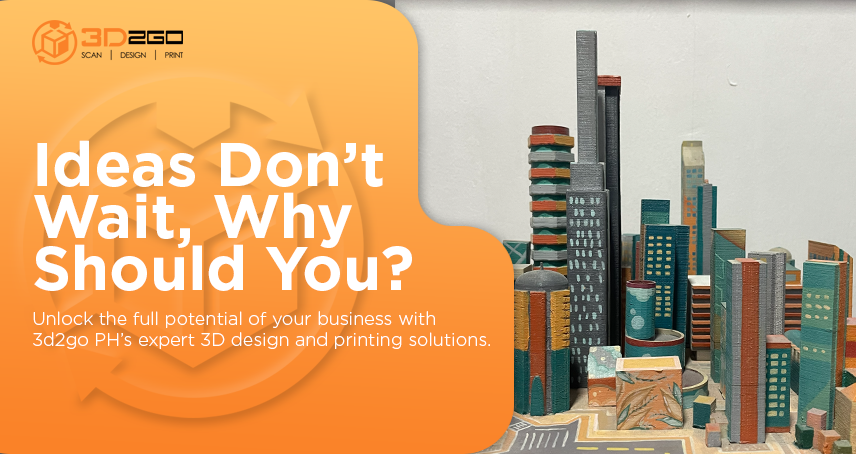
5 Ws & 1 H of 3D Printing Services Philippines
June 23, 2022
Advantages of 3D Printed Car Accessories
June 23, 2022Got some questions about 3D printing? We’ll answer it in this article!
But before that, let’s talk about the definition of 3D printing in the context of technology and modernity.
3D printing is the process of making three-dimensional objects out from a digital file with the help of powerful 3D printers. Nowadays, 3D printing is gaining traction from different industries such as healthcare, construction, and education. The reason behind this unprecedented rise in popularity is the ability of 3D technology to drive possibility.
Just imagine, in China, 3D printing companies can print houses and apartments with only half of the usual cost of construction.
Although, 3D printing is still relatively new. So it is only natural for people to have questions about it. And there is nothing wrong with wanting to know more.
Do you want to get to know 3D printing a little better? In this article, we gathered 16 questions that people usually ask.
Eight 3D Printing Questions, Answered:
1. How to start 3D printing?
3D printing starts with a digital file of your project. You can get digital files from 3D printing websites, or you can create your own using 3D modeling software.
Once you secure all the dimensions of the 3D file, you can share it with your 3D printing provider for printing. However, if you want to do it yourself, you will need a 3D printer and filaments.
2. How long does it take to 3D print?
3D printing is not like paper printing. The time it takes to 3D print an object is longer. The reason for this is simple. There are a lot of factors that go into 3D printing. Here are most of them:
- Size – 3D printing is unlike 2D printing, wherein the size of the image rarely matters. The bigger the size, the more layers it will take. Hence, the printing process will be a lot longer.
- Height – The taller the object, the longer it will take to print. 3D printers print layers by layers. So to make large objects, printer operators print piece by piece then combine it during post-processing.
- Type of material – Thermoplastic materials such as PLA and ABS are common and usually easy to use. But complicated filaments such as metal and glass take more time to cool down and use for printing.
- Complexity – The more complex the geometry, the longer it will take to print. 3D printing is like drawing an object. If it has a lot of curves, it is harder to print.
- Post-processing – After the printing is complete, printed items undergo extensive post-processing. Post-processing includes sanding, wherein they clean the 3D object to make it more appealing. This process eats up a lot of time since it requires meticulous attention to detail and a large amount of patience.
3. What are the different applications of 3D printing?
Industries used 3D printing in a variety of ways. Let’s take a look at some of them:
- Automotive – Car manufacturers use 3D printing to print lightweight materials. Since 3D printed items are sturdy despite their weight, safety concerns are, surprisingly, the least of their worries.
- Health – 3D printers can create 3D printed casts that can help children with fractures heal faster. Hospitals with advanced technologies are testing the idea to use 3D printers to produce artificial limbs and body parts.
- Construction – Like automotive, 3D printers are a viable option in creating lightweight materials for construction. Other than that, engineers use 3D prototyping, designing, and modeling to test building ideas. The process lowers construction risks and costs.
- Fashion – Smart clothing, ever heard of it? 3D printing plays a vital role in designing high-tech clothes because of its flexibility. Smart clothes are traditional clothing items that contain modern technology. Imagine a smartphone connected to your sleeves or glasses. That’s how it is in a general sense.
- Dentistry – 3D printing can help dentists make surgical guides, dental models, molds for clear aligners, dentures, or castable patterns for crowns and bridges. In short, it helps them to accomplish their job faster without the risks of making mistakes.
4. What is the best 3D printer to buy?
It depends. For beginners, Flashforge Creator Pro is usually the best printer.
It is an easy to use and a precise, and reliable printer. Its advanced nozzle can print two filaments at once. It is also equipped with turbofans to avoid overheating, making it the preferred printer for commercial use.
Flashforge Creator Pro supports multi-type materials as well. Besides ABS and PLA, composite filaments such as wood fill, copper fill, and brass fill can be loaded to this printer, as well.
Snapmaker Original is also a good alternative for Flashforge. It is both aesthetically pleasing and highly functional. And it is the preferred printer of many companies, hobbyists, and freelancers.
Like other Flashforge, Snapmaker can print both ABS and PLA materials. It has an all-metal build and modular design to guarantee precision and durability.
5. How much can a 3D printer cost?
Flashforge and Snapmaker are two of the cheapest 3D printers in the market.
Usually, one 3D printer can cost around 70,000 PHP to 160,000 PHP. But Flashforge and Snapmaker are both below 70,000 PHP in price.
If you are looking for a 3D printer provider in the metro, we got you! We are the official supplier of Flashforge and Snapmaker in the Philippines. You can reach out to us to know more about the technology.
6. Where can I 3D print?
Looking for places to 3D print?
3D2GO is the best place to print your projects.
We are the one-stop-shop for everything 3D. We can do 3D printing, modeling, scanning, and designing for you. Plus, we also have a pool of 3D Printing Fabrication experts to guide you and help you with your needs.
On top of our extensive offers, you can easily reach us through our social media page.
7. What can I 3D print?
The beauty of 3D printing is you can print whatever you want. As we have mentioned, advanced 3D companies can now print apartments and body parts.
In the Philippines, museums use 3D printing to create replicas of highly sensitive artifacts. Also, the energy industry enlists the help of 3D printing companies to produce parts for wind and water turbines.
In 3D printing, you can go big or go small. It rarely matters. What is important is what is true according to your project and vision.
8. Why is 3D printing so advantageous?
Why do companies love 3D printing? And what makes it so special and unique?
To answer the question, let us look at our definition of 3D printing. Companies love 3D technology because it promotes innovation. It gives businesses access to limitless possibilities that might solve their industry problems.
On top of that, here some of the well-known benefits of 3D printing:
- Flexibility in design
- Speeds up the prototyping process
- Print on demand
- Lightweight products
- Sturdy
- Consistency
- Minimize waste
- Cost-effective
- Easy to access
- Environmentally friendly
- Save on tooling costs
- Sustainability
- Customization
- Mitigate risks
- Reduces error
- Reduces turn-around time
3D Printing Service Near Me
Are you looking for a 3D printing partner that is both trustworthy and knowledgeable?
Contact us now! We are 3D2GO. We have years of experience in the 3D printing industry, and we already have accumulated trust from customers, hobbyists, and companies.
Reach out to us through our Facebook page, or you can leave us a message here.






